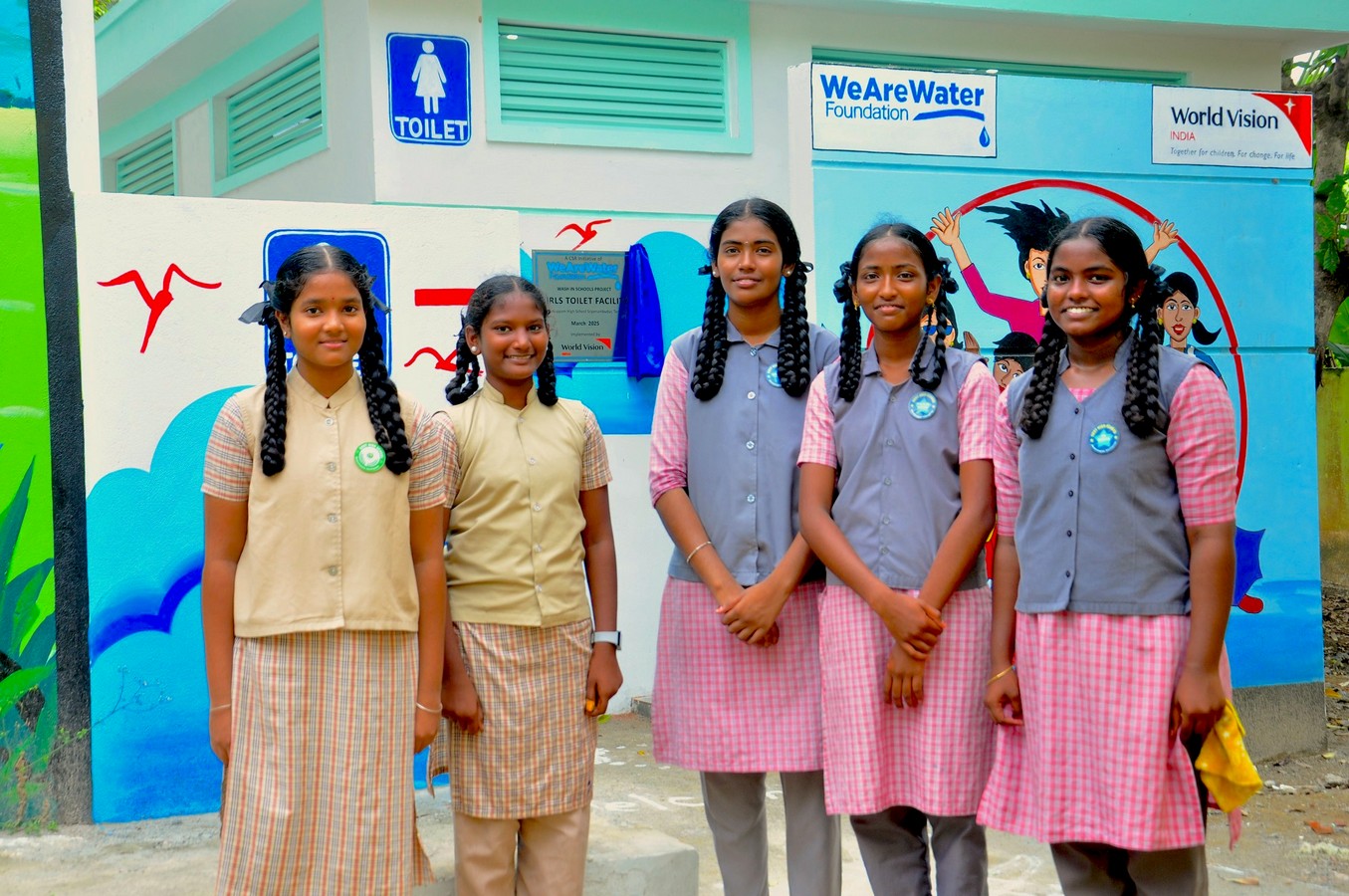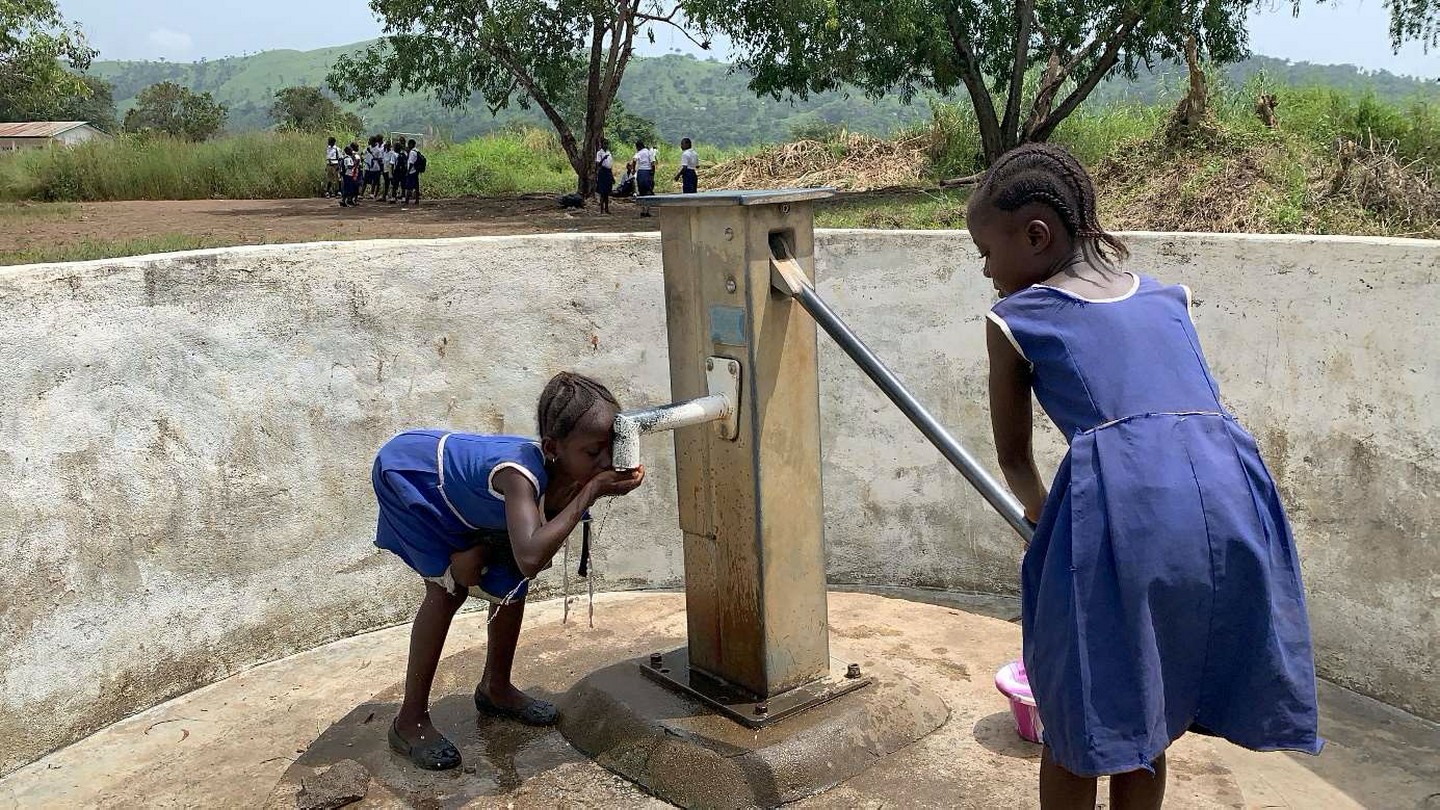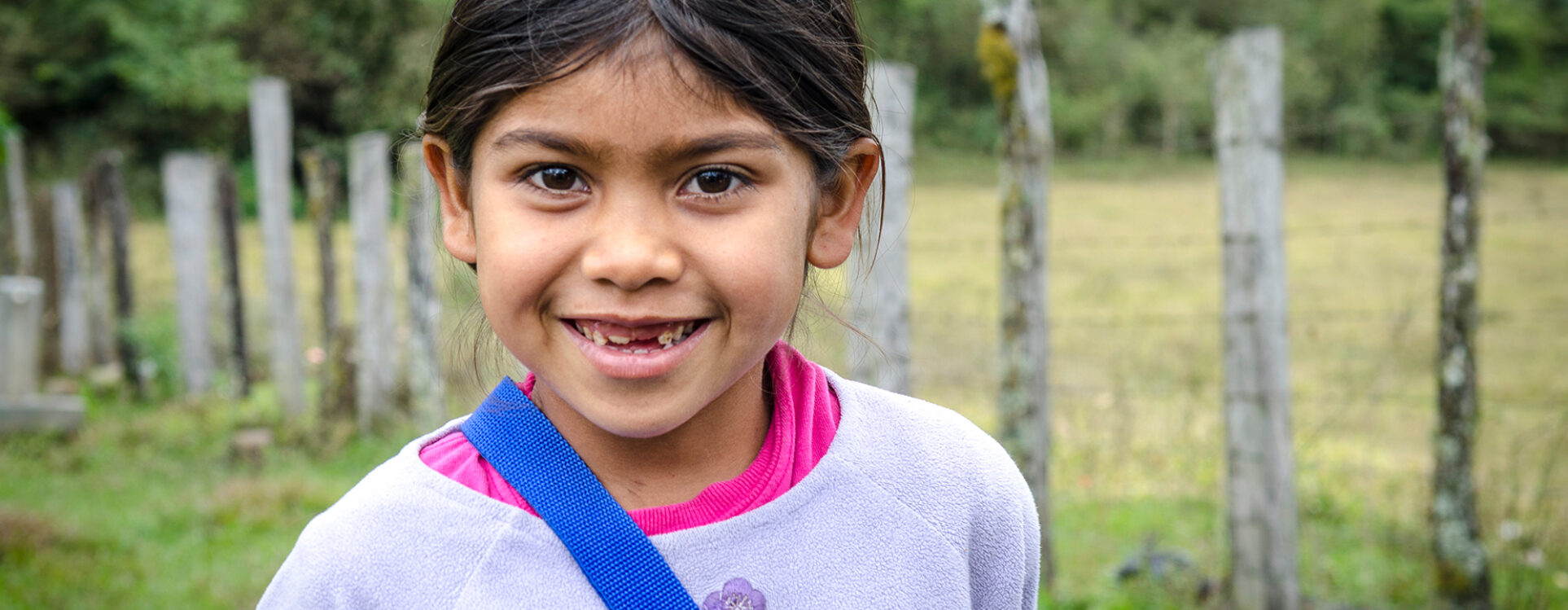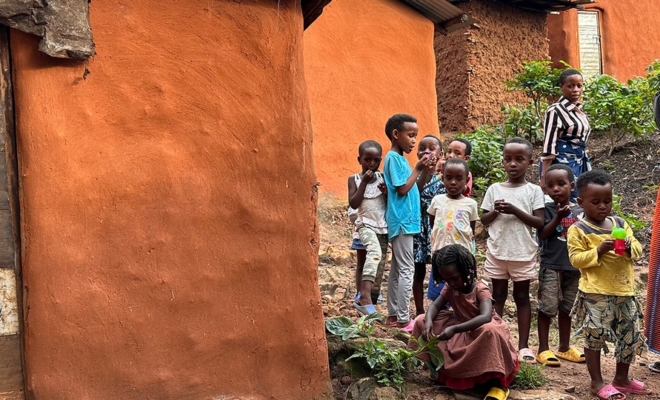For many of us, going to the bathroom at school was never a big deal. For others, it remains a source of discomfort, shame, or even fear. In many impoverished rural communities, having access to a clean, safe, and private school toilet can mean the difference between attending class and staying home. It can be the line between dignity and dropping out of school—and between learning and poverty.
In 2024, we completed sanitation upgrades in four schools in India, reaching over 7,200 students. Beyond the improved and newly built infrastructure, the human impact has been profound. The transformation of school bathrooms—now clean, functional, and decorated with colourful murals—has significantly reduced the prevalence of many endemic diseases. However, it has also awakened something just as essential and often overlooked: the joy of attending school.
“The new girls’ toilet gives us the privacy and dignity we needed,” say ninth-grade students from the Higher Secondary School in Ranipet, Tamil Nadu. “Now we feel safer, more comfortable… and happier to come to class every day.” Their words reflect a powerful idea: when the school space is well-maintained, a sense of belonging emerges—turning the school into a second home. For teacher Geja Lakshmi, this is key to achieving educational goals: “Now many girls feel at home. They come with confidence and motivation.”
Improved facilities have not only boosted attendance—especially among girls—but also reshaped students’ relationships with hygiene and their environment. “The drawings on the walls make us think good things,” say Monish and Gugan, from grades 6 and 5. “Our school is more beautiful now. We want to come every day.” What might seem like a small detail to an adult can be the beginning of a new relationship for a child—with their surroundings and with themselves.

When clean and safe school toilets become welcoming places—free from shame and disgust—they plant the seeds of a hygiene culture capable of transforming entire communities.
A New Culture of Hygiene Begins in the Bathroom
This is something we’ve seen time and again in the 40 school sanitation projects we’ve carried out. Over 251,000 people—primarily students—have benefited, turning school bathrooms from one of the most significant barriers to attendance into spaces for learning about hygiene.
Over time, we’ve refined this approach together with the NGOs we partner with. This year, we’re applying it to six new projects in India, in schools in Sriperumbudur and Ranipet (Tamil Nadu), Dewas (Madhya Pradesh), and Alwar and Bhiwadi (Rajasthan). These projects will provide 18,000 students and their teachers with modern, safe toilets—gender-segregated and adapted for people with disabilities.
The new handwashing areas are a key element. They’re designed to be lively, engaging spaces, and the murals on the walls do more than brighten the atmosphere—they convey educational messages that, as teachers tell us, have a powerful impact and reinforce their teaching work. “The colourful paintings on the walls have really changed the students’ habits,” says Kamal Kishore, a teacher at the Secondary School in Jaleriya, Dewas. “Now they wash their hands regularly, especially before meals, and they inspire others to do the same. They even explain to one another the benefits of what they’re doing.”
What matters most is the seed being planted. The joy of going to the bathroom has become the joy of going to school—an emotion students bring home and share with their families. It’s the most critical step in building an authentic culture of hygiene: turning students into teachers of themselves and of their households.
Cross-Cutting Values for All Cultures
It’s not just about installing infrastructure—it’s about transforming lives: empowering students, fostering healthier communities, promoting gender equity, and ensuring long-term sustainability.
These benefits are universal, regardless of cultural context. A powerful example is one of our most impactful projects in Africa. In the southern and eastern regions of Sierra Leone, ten schools have become catalysts for profound transformation.
More than 6,000 students now have access to clean water, sanitation, and hygiene—and their lives have transformed the lives of their communities. Around 7,000 families have learned about the water cycle, how to protect it from contamination, and how to improve menstrual hygiene management, thanks to what their daughters are learning at school—laying the groundwork for normalising the female cycle.

A powerful example is one of our most impactful projects in Africa. In the southern and eastern regions of Sierra Leone, ten schools have become catalysts for profound transformation.
The School at the Heart of the System
For those living in industrialised countries, where schools are safe and well-equipped, it can be challenging to grasp the magnitude of this transformation in neglected communities—where daily life is a struggle for survival and migration erodes the social fabric, deepening poverty and indignity.
A child spends a significant amount of time at school, and the school infrastructure becomes a crucial factor in shaping their worldview as they grow up. Numerous studies have demonstrated that the physical conditions of school buildings have a significant positive impact on students’ decisions to continue their education and reduce dropout rates.
A school that invites rather than repels becomes the foundation of an integrated development approach—one that brings together sanitation, hygiene education, environmental conservation, and sustainable water management.
As Arun Kumar, Principal of the Higher Secondary School in Ranipet, sums it up: “It’s not just about building toilets. It’s about building futures.”

This year, in our projects in India, the new handwashing areas are a key element. They’re designed to be lively, engaging spaces, and the murals on the walls do more than brighten the atmosphere—they convey educational messages that, as teachers tell us, have a powerful impact and reinforce their teaching work.





